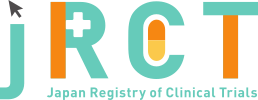臨床研究等提出・公開システム
|
Dec. 17, 2021 |
|
|
May. 29, 2024 |
|
|
jRCT2031210495 |
Physician-Initiated Phase I Study of MA-5 for the Treatment of Mitochondrial Disease |
|
MA-5 Phase I study |
|
July. 25, 2023 |
|
58 |
|
The clinical trial involved healthy adult males, with 32 participants in Part A and 26 in Part B. The mean age (standard deviation) was 30.4 (7.44) in Part A and 33.1 (7.64) in Part B. In both Part A and B, 30 subjects (93.8%) and 25 subjects (96.2%), respectively, had no medical history. |
|
In this study, the initial subject for Part A-1 was enrolled on January 18, 2022. Subsequent enrollments proceeded through Part A-2, A-3, A-4, and Parts B-1, B-2, B-3, culminating in a total of 58 subjects by June 13, 2023. The follow-up concluded on July 25, 2023, with the final analysis completed. |
|
A safety evaluation was conducted on the 58 subjects who received at least one dose of the investigational drug, yielding the following conclusions: Adverse events occurred as follows: 1 event in 1 subject in Part A-2, 1 event in 1 subject in Part A-4, 1 event in 1 subject in Part B-2, 4 events in 3 subjects in Part B-3, and 1 event in 1 subject in Part B-placebo, all of which were graded as 1. No side effects were observed. |
|
Primary Endpoints: 1. Safety Evaluation: The incidence of adverse events was 12.1% (7/58 subjects), with no side effects observed. There were no serious adverse events, nor were there any adverse events leading to discontinuation. 2. Pharmacokinetic Evaluation: Pharmacokinetic assessments were conducted on the population designated for pharmacokinetic evaluation. The plasma parameters demonstrated a dose-dependent increase. No significant changes were observed in any parameters following 7 days of repeated dosing compared to the initial dose, indicating no impact from repeated dosing. The pharmacokinetics of the investigational drug were considered to be linear, although the urinary excretion rate was not dose-dependent. Secondary Endpoints: 1. Safety Evaluation: Various markers related to tubular injury were measured, but no adverse events related to tubular injury were observed. 2. Pharmacokinetic Evaluation: Concentrations of MA-5 and its ten metabolites were measured. The primary metabolites in plasma samples were the unchanged form MA-5 and its metabolites, while the primary metabolites in urine samples were MA-5 metabolites and the unchanged form. 3. Exploratory Endpoints: An analysis was conducted on the population designated for exploratory endpoint evaluation. |
|
The investigational drug was considered to be safe and well tolerated, and there were no events of concern in the development of the drug as a treatment for mitochondrial disease, and no new events to be noted. |
|
No |
|
https://jrct.mhlw.go.jp/latest-detail/jRCT2031210495 |
Sambe Takehiko |
||
Showa University Clinical Research Institute for Clinical Pharmacology and Therapeutics |
||
6-11-11 Kitakarasuyama Setagayaku Tokyo |
||
+81-3-3300-5247 |
||
t-sambe@med.showa-u.ac.jp |
||
Yamazaki Taigi |
||
Showa University Clinical Research Institute for Clinical Pharmacology and Therapeutics |
||
6-11-11 Kitakarasuyama Setagayaku Tokyo |
||
+81-3-3300-5247 |
||
t.yamazaki@cmed.showa-u.ac.jp |
Complete |
Dec. 17, 2021 |
||
| 56 | ||
Interventional |
||
randomized controlled trial |
||
double blind |
||
placebo control |
||
parallel assignment |
||
other |
||
1) Gender: Male (Japanese) |
||
1) Those who have used the drug within 7 days prior to the first dose of the investigational drug |
||
| 20age old over | ||
| 45age old not | ||
Male |
||
None (for healthy volunteers) |
||
The dosage and administration period for each step. |
||
Healthy volunteers |
||
1) Evaluation of safety |
||
1) Safety evaluation |
||
| TOHOKU UNIVERSITY | |
| Not applicable |
| lnstitutional Review Board of ShowaUniversity Karasuyama Hospital | |
| 6-11-11 Kitakarasuyama,Setagaya-ku,Tokyo, Tokyo | |
+81-3-3300-5247 |
|
| scri@ofc.showa-u.ac.jp | |
| Approval | |
Aug. 23, 2021 |
none |
